Deep Water Soloing (DWS) is one of the most hardcore extreme sports you can do these days. Part of the reason why so many rock climbers and boulderers like psicobloc-ing is because you literally feel so free while climbing above the water without any gear or harness.
This rawness coupled with some of the most beautiful panoramic views makes Deep Water Solo Climbing all the more mind-blowing for us adventurers.
Speaking of badass views and locations, it seems like the Internet has more “opinions” than actual climbing spots, which leaves things a little unclear.
So I’ve created this round-up of the best solo climbing locations in the US to help you plan your next DWS adventure.
Best Deep Water Solo Climbing Locations in the United States
This list is not particularly ranked, but the first five are the most popular. But make no mistake, all nine of these locations offer much more than just DWS – it’d be one for the books if you got yourself a boat and explored these gems.
1. Lake Travis-Pace Bend Park, Austin Texas
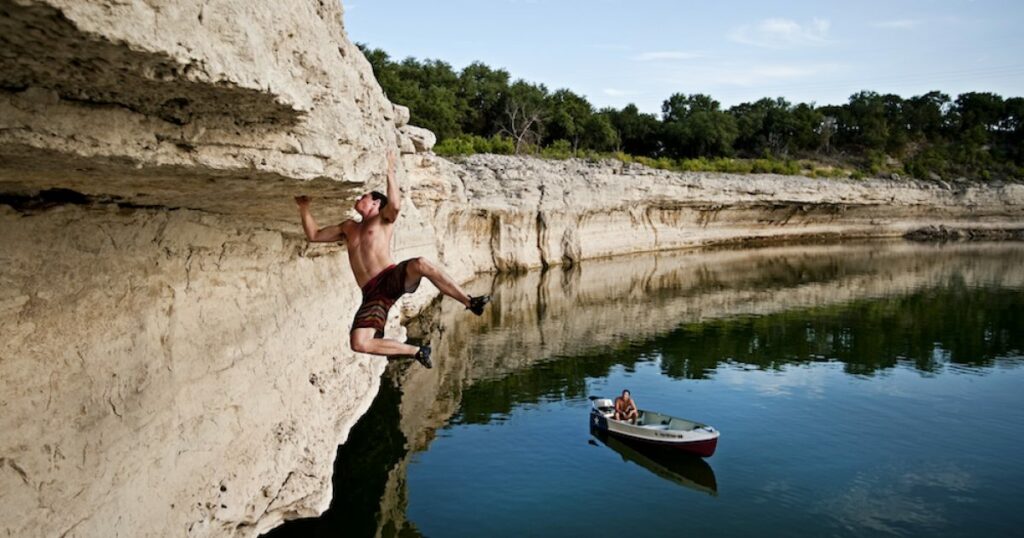
| Cliff height | 15-40ft |
| Difficulty | Beginner to Expert |
| Temperature | 54 – 84 °F |
Cost:
- Park Entrance: $10 fee per vehicle per day
- Extra $2 per boat
Pace Bend Park on Lake Travis is the most popular solo climbing location in the US because of its ease of access and beautiful limestone cliffs. The crags of Lake Travis are located about 30 miles West of Austin, and the temperature around the park is generally a bit cooler than the well-known Texan heat.
While the depth of the water and fall zone is usually pretty decent around Lake Travis, I recommend scouting the area with a depth founder or pole to be sure. You can also book a tent and camp in the park the night before if you want to climb early in the morning.
How to reach start points: Drive down to Pace Bend Park and register your vehicle. Then you can either jump down or downclimb from the 40ft limestone cliff, or you can rent a boat to reach the crag.
Contact Information:
- Pace Bend Park Official Website
- Call: +1 (512) 264-1482
2. Ka’anapali, Maui

| Cliff height | 30ft |
| Difficulty | Beginner to Intermediate (V1-V3) |
| Temperature | 67 – 83 °F |
Cost: Variable (depends on the local boat rental prices)
Soloing crags in Ka’anapali (Hawaii) are best known for their beautiful views that are often compared with the crags of Ha Long Bay, Vietnam. There are other popular DWS locations in Hawaii, such as South Point, but Maui is considered the best.
The waters around Ka’anapali’s Black Rock are comparatively clearer, which makes your scouting job relatively easy.
How to reach start points: You can either hike to the top of Black Rock or rent a boat. Use these steps if you choose to hike.
3. Banks Lake-Grand Coulee, Washington

| Cliff height | 10-40ft |
| Difficulty | Beginner to Expert (V1-V7) |
| Temperature | 46 – 71 °F |
Cost: Boat rental starts from $35.
The water from the Columbia River into the Grand Coulee basin has created this enchanting DWS location on Banks Lake. The granite and basalt outcroppings on the rocks help with different climbing styles such as crimps, edges, and pockets.
Make sure to jump outwards into the water because the climb on the rocks of Banks Lake is less than vertical (aka it’s slanted).
You can also spend the night in nature at Banks Lake. The Washington Department of Fish and Wildlife (WDFW) has designated camping spots at specific sites around the lake.
How to reach start points: You’ll need a boat to travel to Banks Lake. You can rent one from the Sunbanks Resort.
4. Lake Powell, Utah
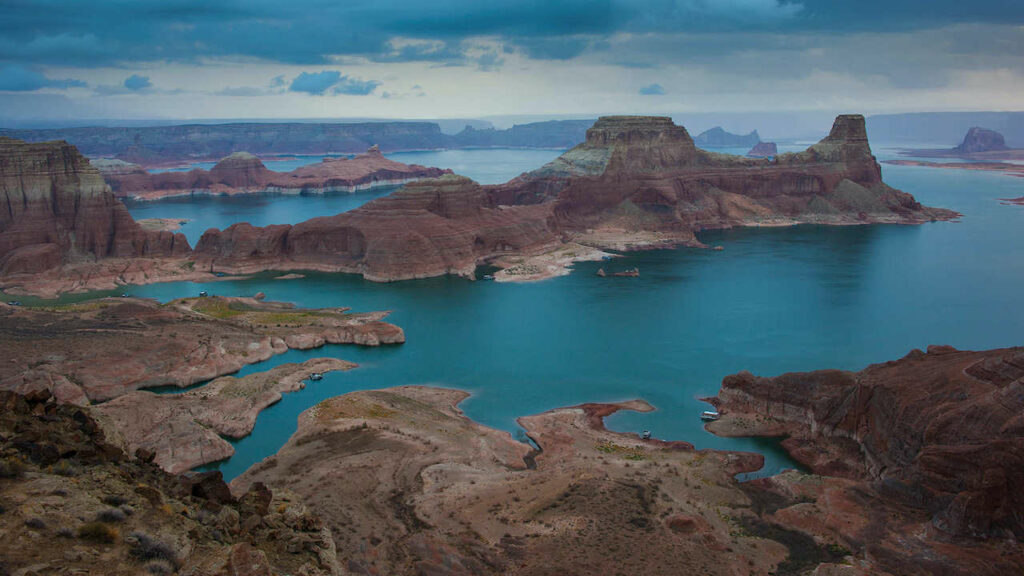
| Cliff height | 500ft |
| Water Depth | 10-20ft |
| Difficulty | Beginner to Intermediate |
| Temperature | 55 – 84 °F |
Cost: Variable (depends on the local boat rental prices)
Lake Powell is my second favorite solo climbing spot after Lake Travis for two reasons:
- It’s not exactly a lake, more like a pond
- Its 2000 miles of shoreline and strict “no bolts policy” make Lake Powell the definition of “blank canvas.”
It’s as raw as it gets. There aren’t even designated routes so you can climb anywhere you want. But keep in mind:
- The climb is made up of Wingate and Navajo sandstone, which gets brittle when wet. Make sure the rock is dry as a bone before you climb.
- The water rises to about 6 inches every day during high tide season, so your “start point” today can quickly be gone tomorrow.
How to reach start points: You’ll have to rent a boat to get to the crag locations. I recommend getting a pontoon or houseboat to explore the massive lake.
For more information, contact the authorities: lakepowell.com
5. Summersville Lake, West Virginia
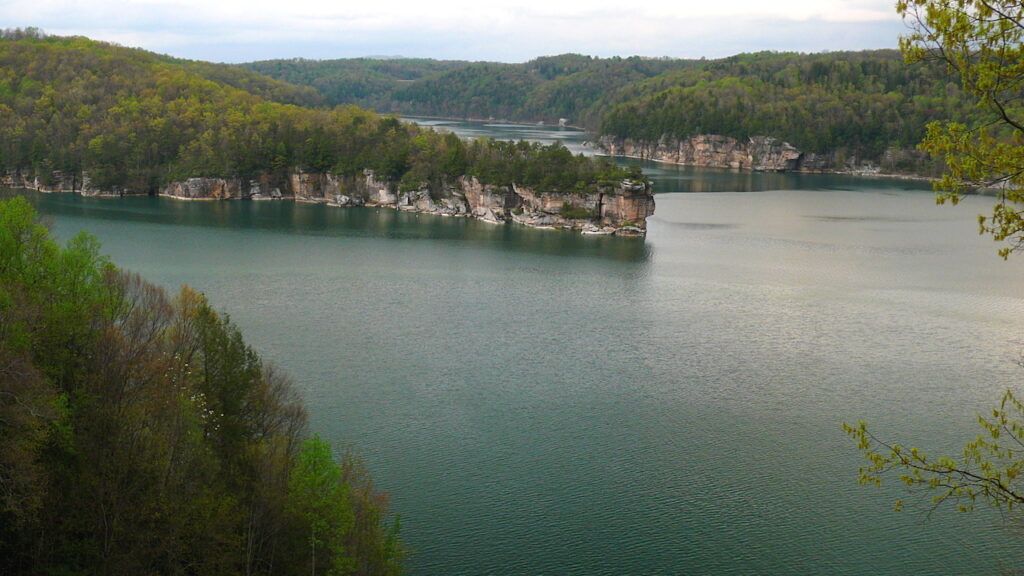
| Cliff height | 30-100ft |
| Difficulty | Intermediate to Expert (V3-V8) |
| Temperature | 47 – 71 °F |
Cost: Variable (depends on the local boat rental prices)
Summersville Lake in Virginia used to be the go-to spot for DWS adventurers half a decade ago, but it’s not nearly as popular today.
The spot near River George is perfect for deep water solo climbing because it has miles of hard sandstone and various high-quality single patches. It’d be a climber’s haven if it wasn’t borderline illegal.
Technically, it’s illegal to jump off the cliff and fall. At the same time, solo climbing is considered an “accident” rather than an intentional jump, albeit the difference between the two depends entirely on your relationship with the rangers.
While Redditors believe that local rangers have a good relationship with climbers and the hefty $5000-10,000 fine is only for cliff jumpers, I suggest taking this information with a grain of salt.
How to reach start points: Renting a boat is the only way to reach the crag.
6. Kinkaid Lake, Jackson County Illinois
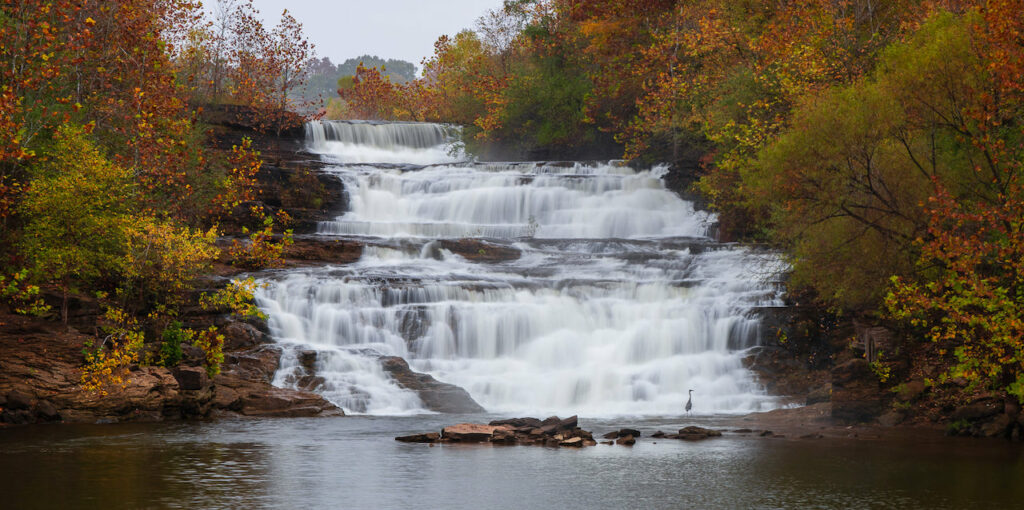
| Cliff height | 60ft |
| Water Depth | 20ft+ |
| Difficulty | Intermediate to Expert (V3+) |
| Temperature | 55 – 78 °F |
Cost: Boat rental prices are about $90 for a Jon boat and $225 for pontoons.
There’s a beautiful cliff for solo climbing along the shores of Kinkaid Lake in the Jackson County of Illinois. It is a 500-ft long sandstone cliff with about 30 climbing routes and 10 boulder problems. Kinkaid Lake is also known for its panoramic view from the top of the cliff and the Jackson Falls.
How to reach start points: Rent a boat from the Kinkaid Marina Boat Shop to reach the crag. You can also choose to hike for about 2 miles from the parking lot.
Check official information on the UIUC website if you decide to hike.
Here’s a Google map capture of the cliff’s location by a Redditor for those of you who love a good treasure hunt.
Contact Information:
- Kinkaid Village Marina Boat Shop
- Call: +1 (618) 687-5624
7. South Point, Hawaii
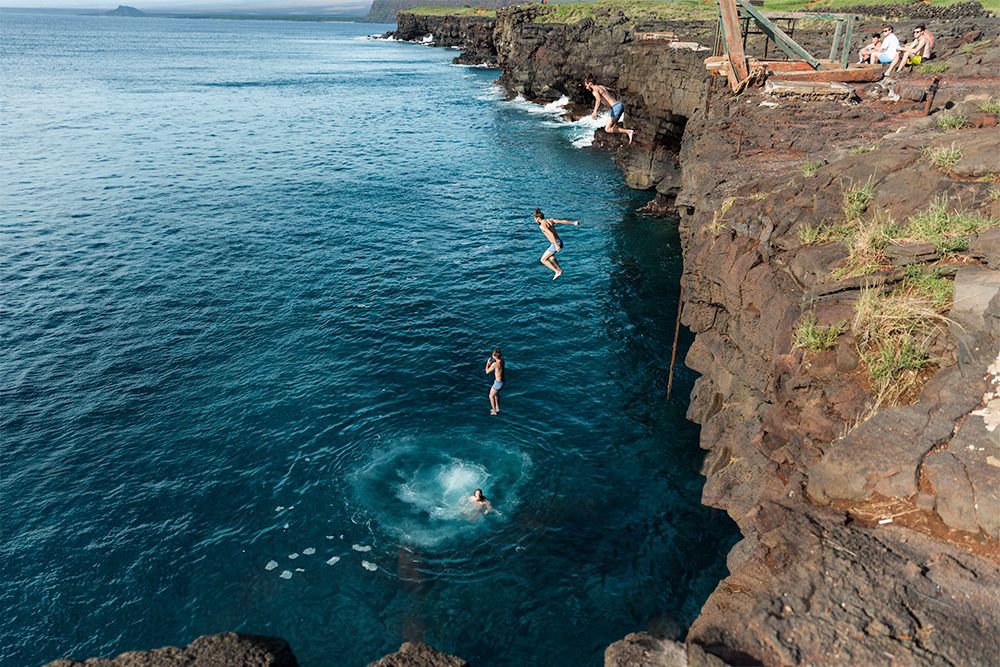
| Cliff height | 40ft |
| Difficulty | Beginner (V0-V2) |
| Temperature | 58 – 80 °F |
Cost: Nil, it’s free!
The island of Hawaii is well-known for its exquisite beauty and various solo climbing locations. But two of them rank above all others – Ka’anapali and South Point.
South of Kamaoa, popularly known as South Point, is the southernmost point in the American continent. It offers exciting DWS routes for beginners who are visiting Hawaii. You can do Sea Level Traversing here because the water isn’t too deep and the cliff is only 40ft above the water.
How to reach start points: Drive down to the southernmost point, take a fork right (opposite Green Sands), and park near the cliff. Jump off and start climbing – it’s really that simple.
8. Laurel Lake, Kentucky
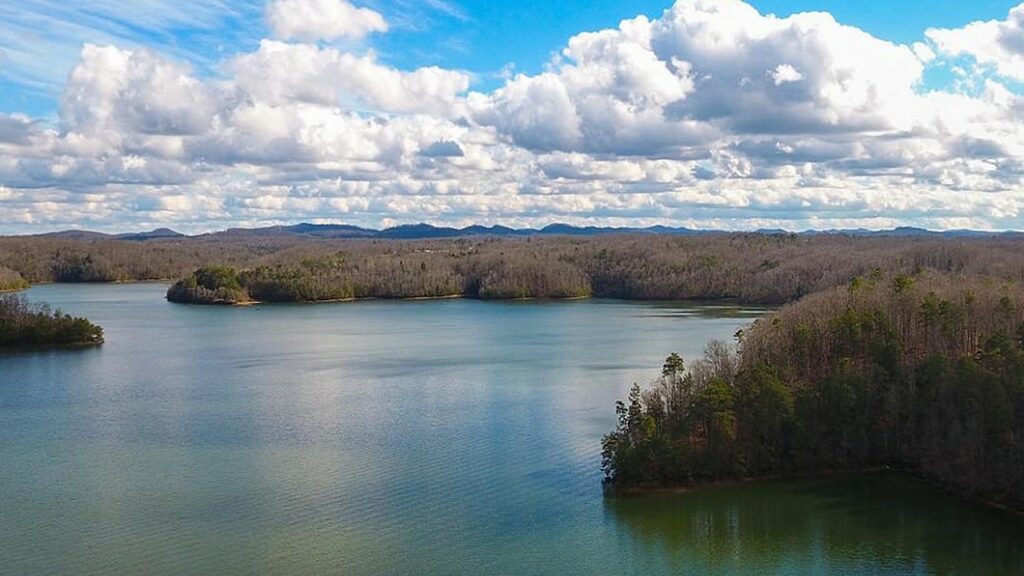
| Cliff height | 20-70ft |
| Water Depth | 10ft+ |
| Difficulty | Beginner to Intermediate (V0-V4) |
| Temperature | 55 – 84 °F |
Cost: Variable (depends on the local boat rental prices)
Laurel Lake in Kentucky is another great climbing spot for beginners who want to climb 20-30ft routes. It also has a few higher routes (about 70ft) for intermediate climbers, and the climb increases during the summer season.
This is because the water is relatively shallow, which sounds suitable for climbing but can be a problem during the jump. Use a pole or a depth finder and only climb if it’s safe.
Ps…the laws around dumping/throwing trash into Laurel Lake are strict but this should be a no-brainer.
How to reach start points: Rent a boat (preferably pontoon), drive to the crag, and start climbing.
9. Lake Champlain, New York
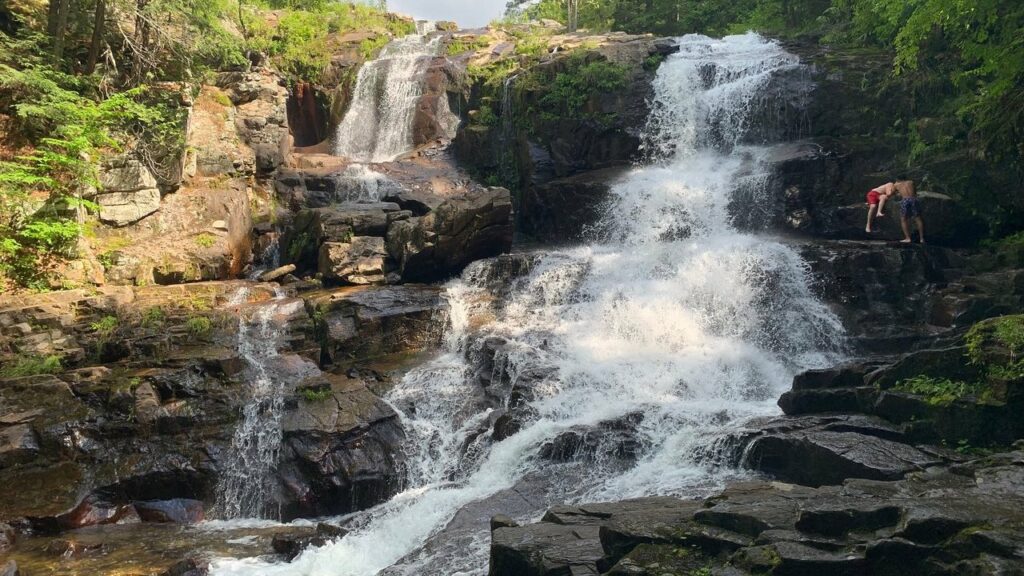
| Cliff height | 200ft+ |
| Water Depth | 140ft+ |
| Difficulty | Intermediate to Expert |
| Temperature | 55 – 84 °F |
Cost: Variable (depends on the local boat rental prices)
I couldn’t make a top 10 list without adding the “city that never sleeps.” To be fair, you can access the solo climbing for Lake Champlain from both New York and Vermont.
The crags and climbing spots in Lake Champlain are not the best, but they’re worth climbing at least once, especially if you’re in the area. Trust me – you won’t regret it!
The area is quite vast, so if you have access to a depth finder on your boat, you could climb many rocks at different crags in the lake.
How to reach start points: Rent a boat (preferably pontoon), drive to the crag, and start climbing.
